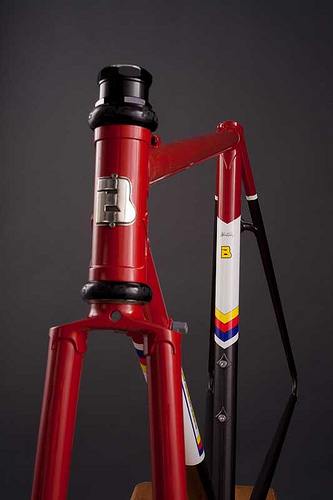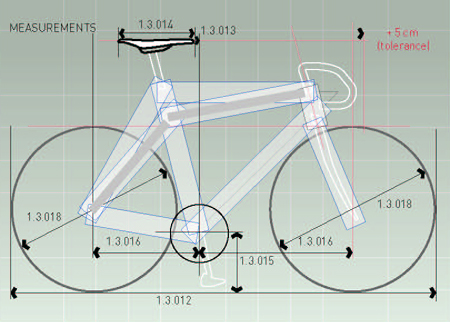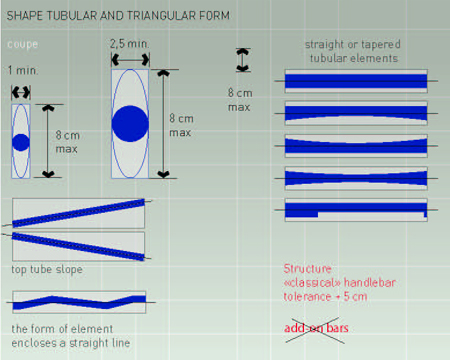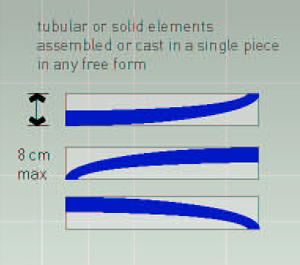I love to ride my bike
 Mon, June 29, 2009
Mon, June 29, 2009 I love to ride my bike, but for some reason hate getting ready to ride my bike. It seems to take me on average about 45 minutes, half an hour if I rush; from the time I decide to go for a ride, to actually walking out the door with my bike.
If I procrastinate over getting out for a ride, it is never over actually riding, but because of this chore of getting ready. How long does it take to throw on a jersey and a pair of shorts, you may ask?
The first thing I do is pump the tires up, check for cuts, and give the bike a quick look over. Then fill two large water bottles with filtered tap water, and place them on the bike.
Then I get dressed, shorts, jersey, socks, that is relatively easy. I don’t put my shoes on until the last minute otherwise I am likely to slip on the kitchen or bathroom floor and fall on my arse.
I have done this on a few occasions, hurting nothing but my pride, but the thought that I could do myself serious injury makes me cautious.
Next I stuff my pockets. A multi Allen wrench, wrapped in a shop towel, and a hard plastic case which houses my cell phone. It is actually a plastic traveling soap case that I found at Target; it keeps the cell phone dry and protects it if I should fall. This is most likely when I would need a cell phone, and a broken one would not be much use.
I used to carry my wallet, until I read in the local paper that a man got robbed on the bike path I ride on, so now I just carry a photo copy of my driver’s license as ID, with relevant phone numbers written on it. If I were intending to go on a long ride, I would take some cash or a debit card.
I often take a banana with me, just in case I decide to ride a few extra miles. I think bananas are the ideal cyclist’s food. The perfect size and shape to fit in the back pocket, and the skin is nature’s own wrapper that is biodegradable.
Can it be I am almost ready, put my helmet on. No, wait I have to change my glasses, I have a special prescription pair for riding, with clip on sun glasses. Invariably they are covered in sweat from my last ride; I go to find the lens cleaner. Will I ever get out of here?
Okay, sun glasses on, can’t see a bloody thing; stumble to the bathroom. For some reason I can’t put a helmet on without the aid of a mirror.
Gloves and shoes on, am I finally ready? I know I am forgetting something; my bike is in one hand and the other is on the door knob. I stand there and do a mental check.
Sunscreen.....I forgot the fucking sunscreen. Off come the gloves, helmet and glasses; Go find the sports spray, quick once over on my arms and legs, that doesn’t take long. However, I can’t use it on my face as it says to keep away from the eyes.
Back into the bathroom, almost slip and fall on my arse, ‘cos now I’m wearing my cycling shoes with the cleats and hard plastic soles. Squeeze some different sunscreen from a tube and apply to my face, ears and the back of my neck.
Glasses, helmet and gloves back on, pick up my door key. Look up at the clock; forty-five minutes, just like I told you. Step outside and the heat and humidity hit me. I feel like I have just stepped into a bowl of hot cream of mushroom soup.
The summers here in South Carolina are brutally hot; it is important I get out as early as possible. Afternoon temps get to 90F or a 100F (32C to 38C) with the humidity anywhere from 80 to a 100%. Anyone who says you don’t need special clothes to ride a bike are welcome to do so. Not me if I’m riding more than an hour.
I look down at the bike, it needs a clean. Did I tell you, I also hate cleaning the bike, but I love to ride my bike
 Dave Moulton | Comments Off |
Dave Moulton | Comments Off | 






















Bigotry
If you find the above cartoon funny, you might be a bigot.
Think about it, would you repeat the joke if the caption read, “I once saw a Black Man run into a Jew, and didn’t know who not to help.” Most decent people wouldn’t, it would be socially unacceptable.
Those old enough to remember back to the 1950s and before. Racial jokes were accepted and it made those at the brunt of these jokes somehow less than human. To some it even made it okay to go out and beat up, or murder members of these minorities.
This dehumanizing meant these minorities were not seen as people with families who loved them, somebody’s father, mother, or child. Often referred to as “They,” or “Them,” which put a less than human face on a person, than it would by saying “Him” or “Her.”
“They” as a group were always judged by the worst behavior in that group. "You can’t trust them; they will rob you blind, given half a chance."
So too are cyclist as a group judged by the worst standard of behavior. “They always run red lights;" or are even blamed for their very existence. "They shouldn't even be on the road."
And when a cyclist puts on Lycra, it becomes his different color skin, and it too becomes fair game for ridicule. "Those stupid skin tight clothes they wear, those ridiculous shoes, and helmets."
I will admit if a cyclist strays more than ten feet from his bike he does look a little strange, but then so too would a guy walking down Main Street in a wet suit and flippers.
It is now against the law to discriminate against a person on the grounds their race, or sexual preference, etc. Because of these laws, such discrimination becomes socially unacceptable. It is a shame when society has to enact a law to force people to do what common decency should tell them what is morally wrong.
Strangely the above cartoon takes a cheap shot at two groups of people whose only crime is that they delay a person for a moment. The person collecting money for a charity that makes you stop and dig in your pocket for change. And the cyclist who may delay you momentarily, preventing you from getting to the next red light a little quicker.
Back before the 1950s a person of different race or color, could be harassed just for being out in public. In some instances cyclists get the exact same treatment today. Has our society advanced at all?
Do we have to keep passing laws to stop people from discriminating against this group or that? It is sad when otherwise responsible and upright citizens behave in this way.
The people, who draw cartoons like this, and the newspapers and magazines that publish them, justify the discrimination and need to stop. Not because cyclists as a group are too sensitive to take it, (Actually our Lycra skin is pretty thick.) but because it dehumanizes people who for whatever reason, choose to ride a bicycle.
And when you dehumanize a group of people, it makes it okay to honk at and harass, to even buzz real close and put the cyclist’s life in danger. To a very small minority it makes it alright to deliberately injure or kill a cyclist.
Some may think "Bigotry" is too strong a term, but is there any difference in hurling abuse at a man because of his race, than doing the same because another is riding a bicycle?
Some may shoot down this argument by saying a man can't help being black, but cycling is a choice. Religion is also a choice, and like religion riding a bike is my right. I have been racing and riding bikes since I was a teen; it has been a life time passion for me, I am not about to quit.
I should not have to endure harrassment and abuse because I exercise my right to do something as simple as ride a bicycle
From this story here
And this one